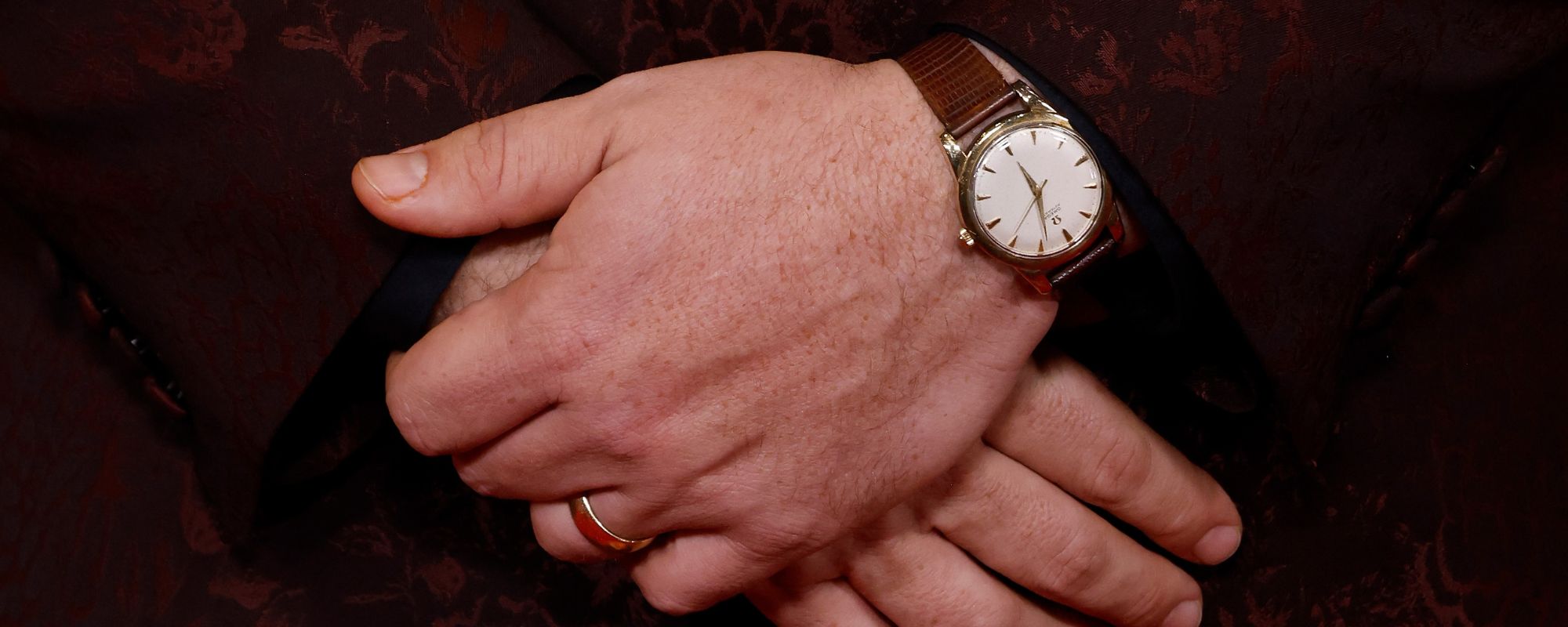With an astounding ability to blend pop, Americana, jazz, and soul Jesse Lynn Madera defies genre with her new EP Fortunes. Madera’s lyrical and piano-driven songs are passionate and alluring, with a dramatic, ethereal, and almost otherworldly tone. Evoking comparisons to the shapeshifting brilliance of Kate Bush and the confessional pop sensibilities of Tori Amos, Jesse Lynn Madera bestows great Fortunes on the listener.
Videos by American Songwriter
“She has a voice as clear and mellifluous as the first songbird of springtime,” shares friend Robert Earl Keen. “Her songs are intoxicatingly hypnotic. Close your eyes, let it all go, and listen to Jesse. When you wake up, the world will look a little brighter.”
Madera produced the majority of the album herself, with help from Paul Redel (Leslie Odom, ZZ Ward). Ryan Hewitt (Tom Petty and The Heartbreakers, Sheryl Crow) took care of the mixing and Eric Boulanger of The Bakery Studios (Hozier, Randy Newman, Harry Connick, Jr, Rufus Wainwright, Imagine Dragons, Neil Young) covered the mastering. The big strings that run throughout the record are thanks to Stevie Blacke (Pink, Chris Stapleton, Rihanna), the illustrious “one man orchestra”.
Madera provided American Songwriter readers an exclusive insight to Fortunes track by track.
Dante:
I wrote this about a producer I worked with several years ago. Looking back it is a #MeToo song, written years before the movement. He was a veteran in the industry, married to a woman who was practically folk music royalty. I was a young musician in New York City, playing everywhere I could, constantly in the red, making sure my band was paid. I went to his place, played my songs, and he gave notes. It didn’t take long before he began to show his true colors—doing a lot of drugs, unable to stay present. Then insisting that sleeping together would give more artistic integrity to the music. After turning down his advances one too many times, he got mean. The praise once heaped upon me was replaced by a variety of humiliation tactics. I got out with my dignity intact, but it took awhile for my optimism regarding my career potential to return. It was a major test of my resilience. My favorite line is “Oh the fury of you lumberjacks who can’t take down the tree / It would take a bigger man than you to make firewood of me.” It’s really a song of forgiveness. He reminded me of Dante Alighieri’s Inferno, and the journey of Dante through hell in order to find heaven. At the end of the day, we are all just trying to feel good. The most miserable among us are often the most desperate. I’m telling him in the song that there’s a different path to contentment, one that doesn’t involve obliterating anyone.
I tracked piano, bass, and drums with engineer Fran Cathcart at Eastside Sound Studios in New York. I’d worked the front desk there for years before I moved to Los Angeles, so I was very much at home in that live room. I’d even slept there a few times! We brought in a big concert bass drum, and the bass parts were bowed upright by Ian Hutchison. Kiel Feher wound up overdubbing orchestral drums after I brought on Paul Redel to help in post-production. Stevie Blacke’s strings take the whole song into epic territory. From start to finish, I hope the listener feels they’ve been on a journey.
Sentimental:
In romance, I allowed my heart to shatter one time. I was seventeen, and he was twenty-three. It was an intense relationship from my point of view and maybe it was for him as well. But when it ended, I was left wondering. During my entire senior year of high school, my mother was terrified I’d give up on all ambition and wind up barefoot and pregnant. In all honesty, there was a part of me that would have sacrificed anything just to be his. Luckily, my mother is stubborn and relentless. Off to college, I went! Before I left, I got into recording home videos. In one of them, my boyfriend and I talked about how he’d kept all of our movie stubs and cards that I’d given to him in a shoebox. It melted me that he would do that. I was always in a state of anxiety about his real feelings. I’m shaking my head now, thinking about it. In the video, he jokingly accuses me of being overly sentimental. That’s where I got the song title. He sent me off to school with a signed pillowcase from his bed. I could never bring myself to throw it out, maybe I knew I’d get a song out of it. Sure enough, the first line of “Sentimental” is: “I still have your pillow case, the one you signed for me to take.”
In the bridge, you’ll hear that when I sing “Time steals everything,” my duet partner Joel Taylor counters with “Heals everything.” I wrote it this way to portray the different mindsets of the loved and beloved. Joel is an incredible singer; he is the consummate musician. He’s one of those people you can count on to show up and get it done and he brings with him a great understanding of song interpretation. “Sentimental” called for some vulnerability, and even a little sense of humor tucked in there. Paul Redel produced this and got a great sound out of the drums with the clever use of a pipe. I was sick that day. The vocal you hear was actually supposed to be a scratch track, but I never did beat it. Because I wasn’t feeling well and was feeling nervous about the session, I asked the wizard player John Thomas to come in and play my piano part. Beachwood Rocker and local Los Angeles legend Johnny Moezzi graced the track with that aching guitar solo. The background singers were from my vocal coach Claire McKeown’s group, Honey Child. She did all of the background arranging. It was fun to watch her work, and I learned a great deal from her. She also arranged the backgrounds for “Dante,” “The Door,” and “Fortunes.”
The Door:
“The Door” is a breakup song. It’s the ‘trying to stay strong song,’ that culminates in a fantasy of turning up on his front porch, only to be greeted by his wife. Never happened in real life, I’m happy to report! The French man with a voice of gold at the beginning of the song is an engineer who was interning at Eastside Sound. He’d been assisting us during the sessions and I thought he had a great voice and a magnetic presence. I had to get him on my record. He was so kind to get in the booth and collaborate with me. I don’t speak French well, so we worked together on translating the bridge, which is more or less a haiku about a hummingbird seeming to freeze in time before it flies away.
Funny Man:
I had a male best friend in high school who was a year younger than me. We had a mutual fondness that really was a romantic relationship, but I could not commit for one reason or another. We did love each other and we made each other laugh. He actually went on to become a clown. Our touch and go relationship went on for years and years until I met my husband. There were times in our mid-twenties that the tables turned and I was the one presenting myself to him. He’d been hurt by me though and maybe had begun to prefer me being in the vulnerable role for a change. He was always traveling for work and I couldn’t follow him around. There was no way it could work, but he wasn’t happy when I decided to get married. We’ve settled into where we belong now, we’re both content. He has an incredible wife and he’ll always be my friend. This song was the only one I played and sang at the same time in the studio, and it’s my favorite track on this album.
7 2 H V N:
I was a bit of a wild child! My circumstances are different now, but that girl is alive and well and she wanted a song. Paul and I built this together at Speakeasy Sound with Ed Benrock from Jamestown Revival on drums. Paul created a loop out of Ed’s drums, and Matt Hornbeck came in with killer guitar parts. It became that nostalgic 80s/early 90s thing I was wanting it to be. I needed it to take us back to sneaking out of our windows and making out in someone’s mom’s car. It makes me smile how many people say this is their favorite track. I brought John Thomas in to play piano on this to simplify and speed up the session. It was the very last song we needed to finish for the digital release. The deadline for getting it to our amazing mixing engineer Ryan Hewitt was fast approaching. I got great vocals at Willie Breeding’s home studio in Nashville. He’s a great engineer and was patient as I figured out the background vocals.
You, With the Sullen Eyes:
I feel like the ghosts from the Kootenai Lodge near Big Fork, Montana, should be writing this explanation, but I’ll do my best. My parents have a house near there and I love to go into the old lodge and play the piano. The piano is from the late 1800s if I remember correctly, and it has beautiful designs carved into it. That is where the line “carved of cherry lacquered oak” comes from. One afternoon, feeling particularly surrounded by spirits, I felt compelled to ask what story they wanted me to tell. This was one of the quickest songs I’ve ever written. It took less than 20 minutes to write the whole thing. The poetry, I felt, was so beautiful. I hope that doesn’t come across as immodest, I truly feel that it came from outside of me. The haunting, melodic vocal melody that you hear before and after the chorus came first. In the studio, I sang that line into the body of a grand piano while Paul held down the sustain pedal. That was Paul’s idea, he is always coming up with ways to play with sound. This is why I call him a “sound chef.”
I saw the characters in the duet clearly. John Hawkes did a fantastic job of portraying the man. He is a grounded performer and took the time to work on the lyrics like a script. He asked questions about the words and gave a ton of respect to what I wrote. It was a glimpse into how he prepares for his roles in TV and film. That was a real treat, and eye opening. I’ll never forget it. His professionalism set a bar for me. Anytime I’m asked to work on someone else’s project, I try to bring that same level of focus and respect. The words “broken soles and tailored seams” are supposed to have a double meaning. It could be heard as “broken souls.” The male character is telling us about a strong, nurturing woman who takes care of things and people. “Her teeth of white, where it drips, my heart” means that he is at her benevolent mercy. I love these characters. They’re timeless. They really lean into one another.
Fortunes:
This song is about trying to release my anxious grip on life. Since I was a little girl, I’ve had a tendency to imagine all the different ways in which things might end. I’d lay in bed and work myself up into anxiety attacks. “Fortunes” is about calming down. I’m always looking for signs, trying to stay ahead of the game. I suppose the reality is that we have some control, but ultimately we are part of a much, much larger picture. We can guess all we want, but in the end life is a rollercoaster. We don’t have much say in the design of the track beneath us. There’s a ton of freedom and enjoyment to be had if we can just let go and marvel. I sang this vocal at the end of a long day in the studio. We did two or three tired takes I think, and I was expecting to go back and re-sing it, but I never did. I like that I’m weary in it. The line about the black dog with my dreams in its mouth is all about the turmoil I was in over my career. I went through years of depression and fear about my music. I had to turn around and face that dog and wrestle my dreams back from his slobbering mouth. It was appropriate to have “Dante” first, and this song last. I have come such a long way since then.
The line “There are no answers, just stories to be told” was inspired by a Garrison Keillor quote: “You get older, and you realize there are no answers, just stories.” I’ve predicted some things in my life, but for the most part, I’ve been very wrong about the details. I have been so, so fortunate to have found such wonderful mentors, friends, and partners in this industry after feeling so down about it for so long. Like I sing in this song: “It don’t get easy, no, but it’s a beautiful life / May every ending be the door to a better ride.”







Leave a Reply
Only members can comment. Become a member. Already a member? Log in.